#sustainable
Text
Brainwash yourself with good habits. You need to do it the way you would train a dog - fetch the stick and get a treat.
I love listening to music but I also wanted to start listening to podcasts. I have to go to work everyday, and I prefer to drive myself to work and back.
I know that if I make myself listen to podcasts both drives, the habit will last not more than 3 days.
But if I make myself listen to a podcast on the way to work; and listen to my favourite music on the way back home to de-stress and relax; now that’s a healthy compromise. And it works for the long term.
The same goes with social media. I deleted all social media from my phone. I don’t have Facebook, Instagram, or even tumblr on my phone. The YouTube account that I keep on my phone has been very consciously kept; I only allow the algorithm to show me educational stuff like podcasts, history videos, news, psychology, stuff like that. Absolutely no entertainment. I keep all my social media (and my “fun” YouTube account which is basically Korean mukbangs and all sorts of useless beauty hauls that I honestly love to watch) on another device - my iPad, which I use for work. I check out what’s happening on tumblr or YouTube or Pinterest when it’s my lunch break or a coffee break. That’s another healthy compromise that works for me.
Going cold turkey with anything - stopping something addictive like smoking or drinking or suddenly starting a plethora of new habits- doesn’t work. You’ve restricted your mind and body so much that you keep remember the good old days where you drank like a whale and sat on the couch watching rubbish and you glamorise, romanticise and reminisce those times. Now you’re in that dangerous red zone where you know that if you see that bottle or the packet of chips, your body is going to reach for it before your mind can intervene.
Aim for long-term, sustainable albeit small habits, rather than complex overnight habits.
#c suite#powerful woman#strong women#ceo aesthetic#personal growth#that girl#productivity#getting your life together#balance#habits#sustainable#how to be disciplined#discipline#inconsistency#Social media#social media detox
2K notes
·
View notes
Text
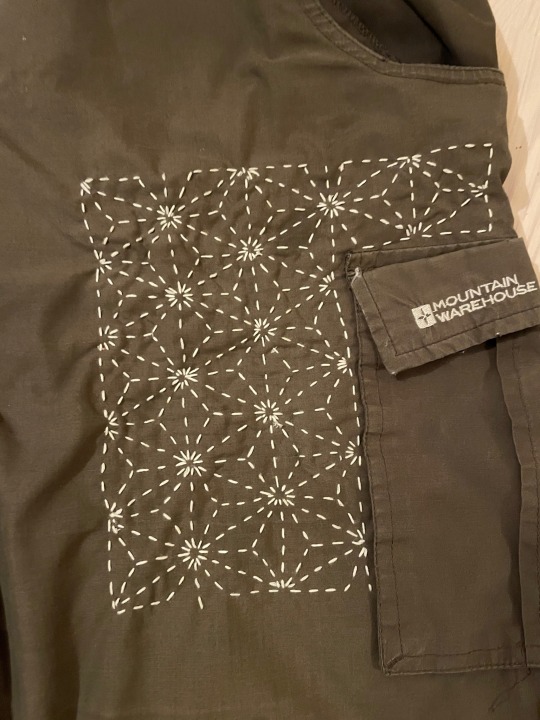
My latest sashiko patch, using the asanoha (hemp leaves) pattern.
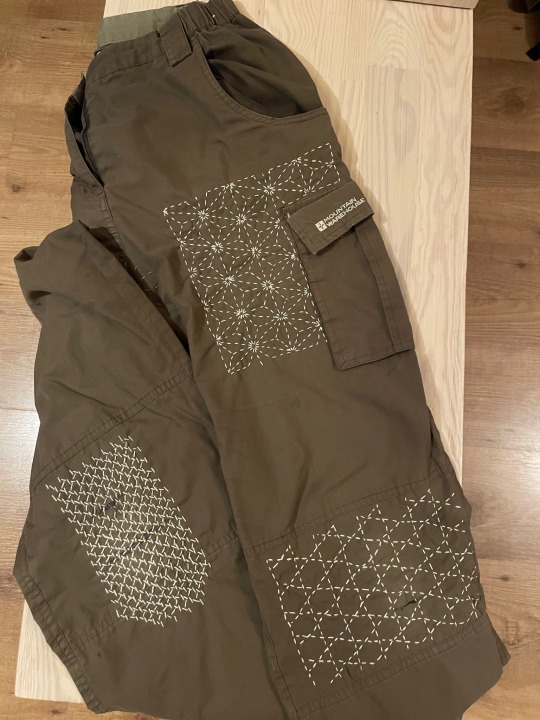
This is the second mend I’ve done using a tissue paper template. See below for details on how it works (or doesn’t - I’m undecided).
1. Pin your patch in place on the inside of the item of clothing.
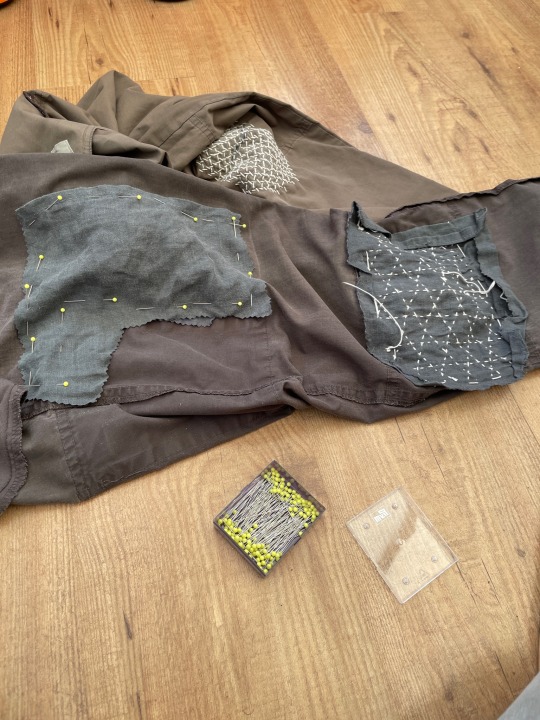
2. Trace grid and design onto tissue paper. My tissue is just scrap from packaging. I traced over a quilting ruler to get everything lined up.

3. Pin in place over the fabric. I didn’t bother removing the original pins, but did leave a wide border round the tissue to help with pinning.
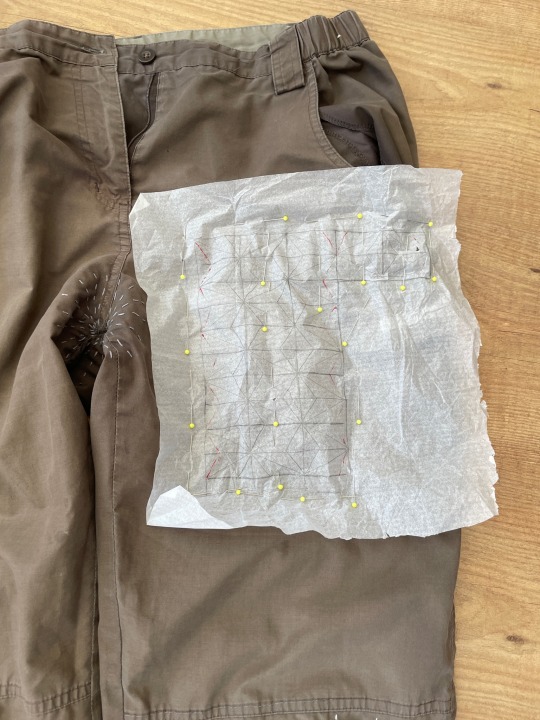
4. Use the pattern guide to sew, stitching through the tissue, original fabric and reinforcing fabric. The tissue will start to tear as you do this. I took out all the pins once I’d stitches all the vertical lines.


5. Peel away the tissue paper and your pattern is revealed! I actually did this a little early, as I had enough lines in place to complete the pattern without a template.
This is the second time I’ve tried this approach. It is really good for getting an accurate pattern - I’ve never had much luck with marking grids straight onto the fabric. However, it does make it really hard to get the fine details right, as the paper obscures them as you’re stitching. That’s why the centre points on my piece look so messy - I just couldn’t see where the other stitches were.
597 notes
·
View notes
Text
Respecting Nature: How to Be an Eco-Friendly Witch.
🌿🌎✨
Witchcraft and nature have an unbreakable bond—one that invites us to celebrate and protect the very world that inspires our craft. As stewards of the Earth, it's essential to practice our craft with the utmost respect for nature. Embracing eco-friendly witchcraft not only honors the environment but also deepens our connection to the magic that surrounds us.
In this blog post, we'll explore the art of "Respecting Nature: How to Be an Eco-Friendly Witch," discovering the importance of eco-conscious practices and offering alternative, sustainable tools to traditional witchcraft practices.
🌟✨
1. Sustainable Altar Decor 🌿
Consider incorporating natural and biodegradable altar decorations like leaves, flowers, and twigs instead of synthetic materials. These elements not only infuse your space with a touch of the Earth but also return to it without harming the environment.
2. Eco-Friendly Candles 🕯️
Opt for candles made from sustainable materials like soy or beeswax. These alternatives burn cleanly, emit fewer toxins, and support eco-conscious practices. You can also repurpose candle stubs into new candles, reducing waste.
3. Ethical Crystal Sourcing 💎
When collecting crystals for your practice, research ethical sources and suppliers. Be mindful of the environmental impact of crystal mining and choose to support companies that prioritize sustainability and fair labor practices.
4. DIY Herbal Magic 🌿
Grow your own herbs and harvest them responsibly for spells and rituals. This not only ensures their freshness but also reduces the carbon footprint associated with store-bought herbs. Consider creating your own herbal oils and teas, infusing your magic with the essence of your garden.
5. Natural Incense and Alternatives 🌬️
Explore natural incense options made from herbs, resins, or dried flowers. You can also choose sustainable alternatives like dried sage or palo santo sticks from ethically sourced providers. Remember to set your intentions and respect for the environment.
6. Biodegradable Offerings 🍃
If you offer food or other offerings to deities or spirits, choose biodegradable options. Fruit, bread, or grains return to the Earth without harm, symbolizing your gratitude for nature's gifts.
7. Sustainable Journaling 📓
For your magical journal, opt for notebooks made from recycled paper or even explore digital journaling to reduce paper usage. This mindful practice also preserves trees and forests.
🌟✨
Being an eco-friendly witch aligns our practice with the very essence of witchcraft—an appreciation for the natural world and a commitment to living in harmony with it. As we tread lightly upon the Earth, our magic deepens, and our connection to the elements flourishes.
So, let us continue to embrace the magic of nature while protecting it, weaving eco-conscious practices into our craft's tapestry. By honoring the Earth, we honor ourselves and the beautiful world we call home.
🌿🌎✨
#baby witch#beginner witch#book of shadows#closet witch#grimoire#magick#witch#witch community#witch tips#witchblr#sustainable#sustainability#ecofriendly#witchcraft 101#green witch#witchy vibes#witchcraft#witchcraft community#eclectic witch#witchyvibes#altar setup#candle magic#witches of tumblr#magicaljourney#crystals#herbal magick#incense#smudging#witchlife#witch resources
699 notes
·
View notes
Video
Because this was a non-union PSA, I can share it again without violating the strike. At a time when we are starved for new material, it is comforting to know that we still have access to content like this. Please watch and share. #TBT
#EatPrayRub#Wellness#Misha#GISHWHES#Serpessence#snake oil#for your health#organic#sustainable#slithery
966 notes
·
View notes
Text
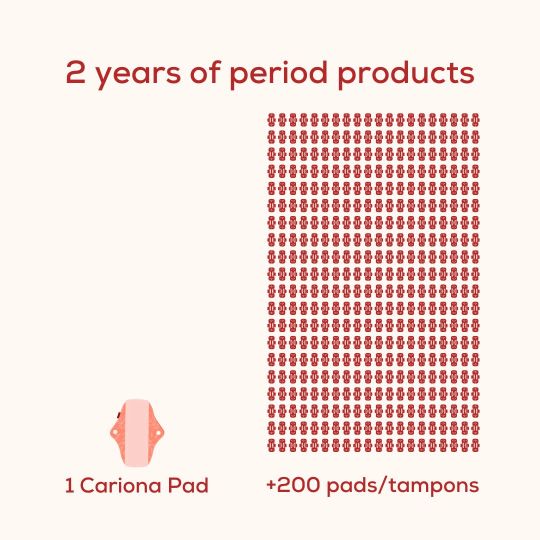
did you know that ONE disposable pad takes at least 500 years to decompose? (source: national geographic)
say goodbye to endless purchases with reusable pads.
it only takes starting with one pad to see the difference. choose sustainability, choose the future.
171 notes
·
View notes
Text
How I Get the Most Out of Meat When Cooking

As someone who 1.) was 100% vegetarian for ethical/religious reasons until very recently, and 2.) recently had to reintroduce meat for vitamin deficiency reasons, limiting waste as much as possible when I cook with meat is really important to me. For one thing, I feel like I owe it to the animal that died to get as much use as possible out of its body as a way of honoring its death. For another, meat is expensive (ethically raised meat even more so) and I want to get my money's worth.
I recently bought a bunch of lamb for my family's holiday dinner, so I wanted to share my attempt to practice the Honorable Harvest in my meat consumption. This is new to me, but I wanted to document the attempt because it's been a fun learning process for me! If you want to actually learn about honorable consumption I encourage you to read the works of Robin Wall Kimmerer and other indigenous ecologists, since the Honorable Harvest is based on indigenous North American practices. (Though there are other cultural practices all over the world.)
Step One: Sourcing the Meat
I am very fortunate to have enough disposable income to buy ethically raised meat, which tends to be more expensive. This is a privilege. Other people are not able to spend this extra money on their meat, and that doesn't make me better than them. Feeding yourself is morally neutral, and a tight budget is not a moral failing. Most meat alternative products (Beyond Beef, Impossible, etc.) are also pretty expensive. If the factory-farmed meat at the supermarket is the only thing in your budget, use that.
If you DO have some extra funds, local farms are a great place to source meat. The reason we had lamb for the holidays is because a local farm recently culled their herd and had lamb on sale. In the past we've gotten beef from a relative who raises cattle. I encourage you to learn about farms in your area and what they have to offer. CSAs and farmers' markets are great places to start. You can also ask around at local restaurants about where they source their ingredients.
When I say "ethically raised meat," what I'm really talking about is pasture-raised animals. Cage-free animals may not live in cages, but they can still be kept in cramped, dirty, inhumane conditions and be sold as "cage free." Pasture-raised animals are able to graze and forage and generally wander around within a paddock. For some animals like chickens you can also look for "free range," which means the animals are unfenced and are able to wander freely. Since I don't cook meat often, I try to get free range or pasture-raised meat when I do buy it.
In some areas, you may also be able to find certified ethically slaughtered meat, which means the slaughtering process has been designed to cause as little suffering to the animal as possible. That kind of certification isn't really available where I live, but it might be for you!
And of course, hunting or fishing yourself is also an option. If you kill the animal yourself, you know exactly how it died and can take steps to limit suffering as much as possible. Hunting isn't a skillset I have, but if you do more power to you!
Step Two: Cooking the Meat
This is the easy part. Depending on the cut of meat you got and the dish you are cooking, you may need to remove bones or trim fat, but aside from that it's just following a recipe.
For our holiday lamb stew, I used this recipe. I have Celiac disease, so I subbed gluten-free flour and replaced the beer with red wine. I also added rosemary and garlic for a more Mediterranean flavor to compliment the wine.
Step Three: Organs and Bones
This is where the breakdown is for a lot of Americans. We don't cook with bones or organs very often, and we tend to throw away whatever parts of the animal we don't want. That is not honorable consumption. Part of the Honorable Harvest is using every part of the being that died to feed you.
Most organs make great stew meat. My favorite Nicaraguan beef stew is made with tongue, and my indigenous Hawaiian relatives make stew with pig feet. And while I don't like them, lots of my Southern family members love chitlins (pickled pig intestines). Lots of cultures eat organs, and you'll find plenty of delicious recipes if you look!
Bones are typically used to make stock, which can be used as a base for future soups and stews. There are lots of recipes for DIY stocks and broths, but I usually fry some onions and/or garlic, deglaze with wine, and then add the meat/bones and the water, plus salt, pepper, and herbs for flavor. Most animal bones can produce two batches of stock before they lose flavor. (For really flavorful stock, leave some meat on the bones.)
Once the stock is done, you'll still have bones to deal with. Contrary to popular belief, cooked bones are not safe for dogs to chew on. (But raw bones usually are!) Instead, I strip any remaining meat and gristle from the stock bones, give those scraps to my pups as a treat, and then use the stripped bones for something else. With a little extra processing, the bones can be used as a fertilizer in a garden, a calcium supplement for chickens, or a safe treat for dogs and/or cats.
This was my first time processing bones, but after boiling them for, like, 12 hours in water with salt and vinegar, they were soft enough to break apart with my hands. I'm going to grind them to make bone meal.
#long post#cooking#the honorable harvest#robin wall kimmerer#sustainable cooking#sustainable#sustainability#animism#kitchen witch#kitchen witchcraft#kitchen witchery#green witch#green witchery#solarpunk#cottagecore#food waste#mine#my writing
252 notes
·
View notes
Text
A list of (realistic) things you can do to be more environmentally friendly
(from an earth-loving horticulture student.)
— COSMETICS
Use bar soap instead of soap bottles
Use old toothbrushes for cleaning surfaces
Try exploring and researching some homemade face/body/lip products
Use ice sleeves, sunglasses, and caps instead of sunscreen (Edit: I’ve seen people say that it is safer and even necessary to wear sunscreen at all times so try to use eco friendly sunscreen instead! In my country it’s pretty uncommon to wear sunscreen often as we usually wear ice sleeves which is why I did not know this oof)
Use coffee grinds or homemade tumeric masks instead of cosmetic products with exfoliator beads
Invest in a metal ear cleanser instead of cotton buds
Try placing more importance on skincare instead of contributing to exploitative beauty companies by buying makeup
Use cosmetic products that do not contain palm oil
— CLOTHING
Try as much as possible to rewear your outfits at least twice before washing them
Actually WEAR your clothes! I know some of y’all just wear them once for your Instagram post and let it rot in your closet forever. Stop doing that!
Thrift, stitch up holes in your clothes, and use second hand clothing instead of supporting fast fashion companies like SHEIN, H&M, Zara, etc.
Cut up your old clothing into yarn and do macramè with it
Cut patches of old clothing to turn into reusable cotton pads
Learn how to knit, crochet or stitch your clothes!
If you use tampons, try menstrual cups or discs instead. If you use pads, try reusable pads or period underwear. (Trust me, it works). Also, use reusable panty liners instead of disposable ones. They may seem expensive but you will end up saving a lot more in the long run
— GARDENING
Plant seeds/cuttings in your old bottles, jars, and containers
Propagate your plants and exchange cuttings with your friends instead of buying new plants
Make your own soil mixes instead of buying soil mixes
Better yet, don’t use soil for your indoor plants and try getting into hydroponics or semihydroponics instead. This saves so much water and doesn’t contribute to mining of soil
Fertilise plants with fruit peels, coffee grinds, and tea leaves. (DO NOT use chemical fertiliser on soil)
Plant more legume plants in your garden instead of using nitrogen fertilisers. (Look up the nitrogen cycle if you need an explanation on this)
Avoid pesticides unless really needed. Try sprinkling cinnamon powder on soil or spraying neem oil on plants and soil to keep away pests.
If you have a lawn, try looking into rain gardens and consider making one
Let the (non invasive) weeds in your lawn/garden grow! They are there for a reason!
Stop killing earthworms and millipedes in your garden. This also applies to snails native to your region. They are there for a reason.
Water used to wash fruits and rice can be used to water plants
— REDUCE, REUSE
Use the caps of jars as soap holders
Use recycled paper/notebooks
Wash and dry your glass/plastic items before throwing them in the recycling bin
Keep any plastic bags for future use
Use eco friendly or reusable dish sponges
Use reusable straws and cups
Invest in a fabric cup holder
Bring a water bottle with you wherever you go
Drink more water and less sugary drinks
Bring reusable bags for buying groceries instead of using plastic ones
Always keep a folded up tote/shopping bag with you in case you spontaneously decide to buy something
— ELECTRICITY
Set a timer on your air conditioning instead of letting it run throughout the night
Better yet, use a fan instead of an air conditioner
Open your windows! Aerate your home!
Allow natural light to enter your home during the daytime, so as to avoid turning on your lights
Switch to LED lightbulbs instead of regular lightbulbs
Turn off any switches in your house when they are not in use
Collect the water from your air conditioner/dehumidifier condenser and use that to water plants, clean surfaces, steam ironing, and flushing toilets. Do not drink it though!
— INTERNET
Delete your all of your unwanted emails
Delete your inactive social media accounts
Try not to post excessively on social media and stop scrolling excessively too. This not only reduces energy usage but also improves your mental health and productivity
Try to keep to one social media app instead of having so many
Reduce your internet usage
Save your eBooks on a thumbdrive instead of on cloud
Use Ecosia instead of Google
Stop being influenced by social media trends that only just contribute to consumerism
Download music instead of streaming
Reduce online shopping
— FOOD
Reduce intake of processed foods
Reduce intake of fish, beef, and dairy
Try eating vegan or vegetarian foods at least once or twice a week
Cook your own meals instead of eating out
Bring your own food containers when taking away food from stores
Beeswax wrap instead of cling wrap!
Buy loose-leaf tea or plastic free tea bags instead of regular tea bags
Eat more mushrooms, vegetables, and fruits and drink more water
Support local farmers
And finally, educate yourself more about ecology and the environment!
#environment#ecology#sustainability#ecofriendly#anti lawn#anti beauty culture#hell on earth#save the earth#recycling#fast fashion#plants#feminism#environmental activism#plantcore#ecopunk#solarpunk#horticulture#sustainable#slow fashion#zero waste#plastic free#conservation#climate change#global warming#soil science
1K notes
·
View notes
Text

This project...oh boy this project. So. I hate the yarn I used, it was an odd cotton yarn and my fingers did NOT like the texture of it, it almost felt like knitting with cotton wool which I also do not enjoy the texture of and makes me want to crawl out of my skin suit. But, despite my obvious dislike of touching this yarn, I do love this project because of what it is.
I did not make this as a wearable scarf, my point in making this was more as a teaching tool, as a physical and visible example of climate change. Every four rows, (every two garter bumps?) is representative of one year. The colours, starting with the blue, represent the average global temperature starting from 1922 all the way to 2021.
#project || climate change scarf#craftblr#craftivism#scarf#climate change#global warming#environmentalist#environment#environmetalists#sustainability#sustainable#save the planet#no planet b#crafter#crafting#hand crafted#craft#crafts#hand knitted#knitting#knitblr#knitted scarf#knitted accessory#knitted winterwear#accessories#winter accessories
307 notes
·
View notes
Text
Can’t be vegan? Go vegetarian.
Can’t be vegetarian? Do meatless Mondays.
Trying your hardest (whatever that may be) to help animals and the environment is far better than sitting on the sidelines and watching it burn.
#vegan#vegetarian#meatless Monday#animal rights#animal liberation#environment#environmentalism#climate change#animal welfare#animal cruelty#veganism#save the planet#climate action#climate crisis#global warming#climate#ecology#recycling#sustainability#sustainable#go vegan#veganuary#plant based
191 notes
·
View notes
Text
An open letter from Dr. Tamer Al-Najjar, a professor and consultant in Environmental Engineering in Gaza. Before October 7th, he was a respected and in-demand expert on hydrologic engineering. He describes what his life is like now.
Nothing will Ever be the same Again
It will never be easy at all to return and continue living normally after this war has shattered everything in our hearts, our trust in the world the countries around us, the books, history, strategic plans, and more!!
How should I go back to work as an environmental engineering expert, dealing with climate change and sustainability goals? While all my international memberships couldn’t protect me from the shelling and killing!
How can I participate in conferences and research journals about resource and water supply management in conflict zones? None of it granted me at least the minimal requirements of water as recommended by the WHO.
And how can I continue designing sustainable buildings for clients in Eastern and Western countries and interact with people as if nothing has happened when the entire world has let us down?
A million ‘hows’ I pose, and I find no logical answers for them in this context!!
A million research papers, books, and volumes have been crafted by the West in major international conferences, summits, and meetings about the concepts of international law, human rights, food and water security, green economics, gender equality, environmental project empowerment, and entrepreneurship. In Gaza, we are a part of it, seeking alignment and keeping up with global progress.
Now, all of it has lost its value; all of it is reduced to zero, devoid of meaning altogether. How can it hold any value when I used to train in international projects on strategic planning, sustainable project management, and gender equality in many subjects and do research on water and food security, among other topics? I now only seek survival. Just survival!
It has become futile, with no purpose left. This is our new reality.
Dr. TAMER M. ALNAJJAR / GAZA / NOV. 4,2023
@najjart_1
Source: Tamer Al-Najjar on Instagram
You can find Dr. Al-Najjar on Instagram and Twitter/X at “najjart_1”
#gaza genocide#north gaza#gaza#gaza strip#gaza under attack#free gaza#from the river to the sea palestine will be free#palestinian genocide#environment#environmetalists#enviromental#engineering#sustainability#sustainable#go green#tamer al najjar
227 notes
·
View notes
Text
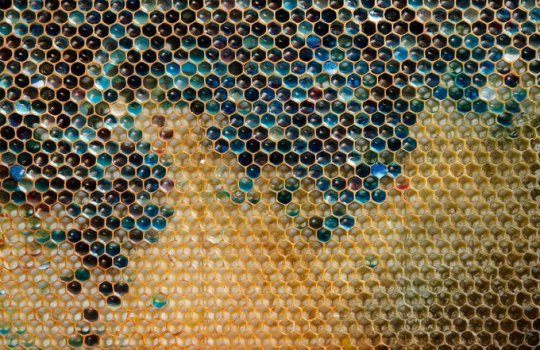
In 2012, French Beckeepers could not solve the mystery of the blue and green colored honey in their bechives until they discovered that the bees were visiting a local M&M factory. 😂
Did you know? 🎓
#architecture#art#landscape#design#interior design#nature#project#sustainable#architectdesign#photography
136 notes
·
View notes
Text
A tip for any therian wanting to be closer to their theriotype, no matter what it may be:
Be sustainable.
You may be a bug, a fish, a mammal, a reptile, or something else. But you are a creature. Take care of your home, be it small or big.
Take a clipping of a herb next time you buy it, and regrow it so you don't have to buy them anymore. Learn basic foraging, and opt for natural snacks or ingredients if you can. Learn to mend clothes instead of throwing them away, and when they're beyond repair, turn them into patches and make something new. Collect rainwater for plants, or maybe even filter it to drink. Compost waste if you can.
Do what you can to protect and help your home through small and big actions. Be it creating a large garden to avoid having to buy and waste food, or choosing to patch up a cool t-shirt with a hole instead of throwing it away. Our actions are harmful, but we can try to lessen it. Take care of our homes and our kin, and make a change or two.
#alterhuman#therian#therianthropy#theriotype#alterhumanity#wolf therian#wolfkin#wolfdogkin#nonhuman#therian community#nature#natural#sustainability#sustainable#self sustaining
398 notes
·
View notes
Text

110 notes
·
View notes
Text

Keep mending my pyjamas just because I like red on black.
80 notes
·
View notes
Text

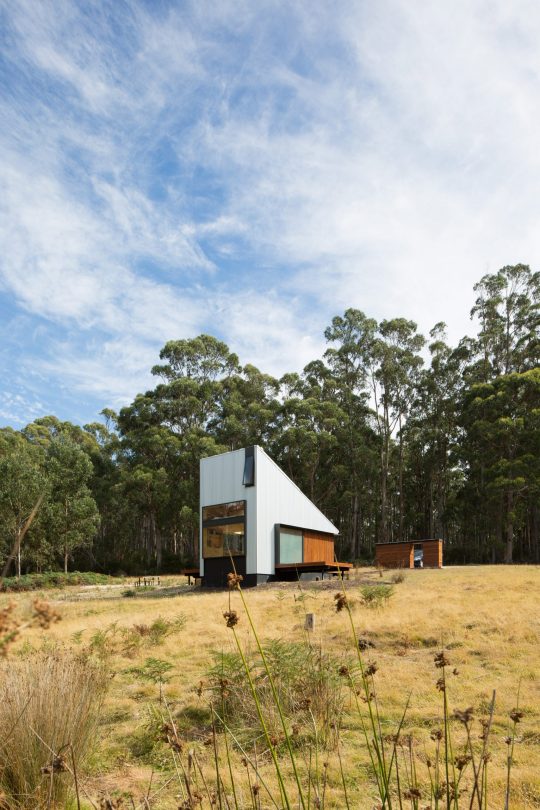


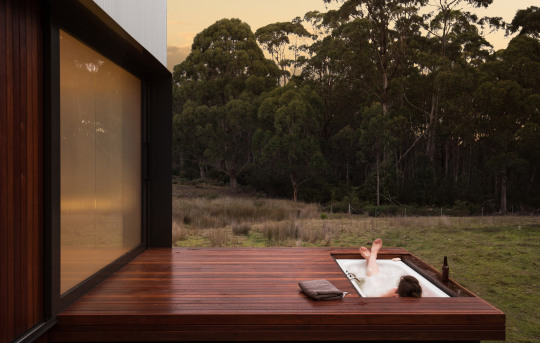

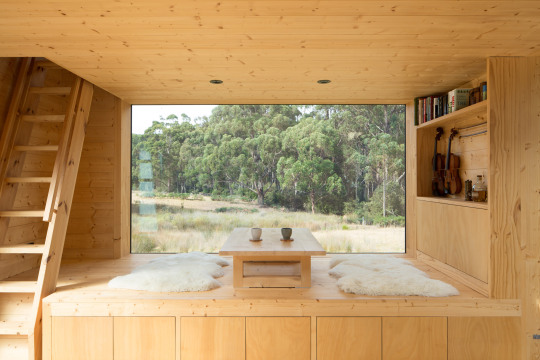
Bruny Island Cabin, Tasmania - Maguire & Devin
#Maguire & Devin#architecture#building#design#interiors#modern architecture#tiny house#home#cabin#retreat#countryside#landscape#nature#timber#sustainable#log burner#steel#australia#cool architecture#deck
267 notes
·
View notes
Text

Seed Bombs are little balls made up of a combination of compost, clay and seeds. The act of using the ball is called Seed bombing, which is the practice of introducing vegetation to land by throwing or dropping the seed bombs. The structure of the bomb enables the seeds to be launched over walls or distances, as the compost and clay act as a barrier to protect and nourish them, so they don’t need to be planted.
This technique is used by Guerrilla Garderners. Guerrilla Gardening is the act of gardening – raising food, plants, or flowers – on land that the gardeners do not have the legal rights to cultivate, such as abandoned sites, areas that are not being cared for, or private property.
219 notes
·
View notes